Over half of environmental health and safety (EHS) leaders report injury frequency (53 per cent) and severity (51 per cent) have either remained stagnant or worsened over the past year, according to Benchmark Gensuite’s 2025 EHS Benchmarking report.
The proprietary research was released today and is based on a survey of over 100 EHS professionals across multiple industries. The report highlights persistent challenges—such as workforce turnover, insufficient training, and underreporting—and explores the critical role of AI in addressing these issues.
“The 2025 EHS Benchmarking Report underscores the urgent need for organizations to rethink their approach to workplace safety,” said R. Mukund, Founder and CEO of Benchmark Gensuite. “Safety can no longer be treated as a checkbox for compliance – it’s a critical driver of operational resilience, employee well-being, and financial performance. Through AI-driven solutions, companies can identify risks early, simplify reporting, and make meaningful improvements that positively impact both people and the bottom line. Strong executive support and investment in advanced technology are keys to driving substantial change, securing long-term business success, and most importantly, keeping the most valuable asset– employees– safe.”
Key findings from the 2025 EHS Benchmarking report include:
- Persistent safety challenges hinder success. Workforce issues, including high turnover, hiring challenges, and onboarding new employees, are stalling progress and contributing to workplace injuries for 55 per cent of organizations. Insufficient training (34 per cent) and time and manpower shortages (31 per cent) round out the top three slots on the list.
- Feedback and reporting issues are a significant roadblock. An alarming 79 per cent of respondents believe accidents, hazards, concerns, and near misses are underreported.
- The responsibilities of EHS leaders have grown. Forty-five per cent of EHS leaders said ESG and sustainability goals have intensified the complexity of their EHS roles, limiting their ability to focus on core safety functions. Another 35 per cent said managing compliance with new and evolving regulations is another burden.
- AI technology is becoming an essential tool for modernizing workplace safety management. Fifty-nine per cent of organizations are confident that generative AI can help predict and prevent injuries. Another 39 per cent of companies are increasing their AI investments for EHS in the next 12 months.
The 2025 EHS Benchmarking report reveals a growing optimism around AI’s potential to transform safety management. This year, over half of organizations (51 per cent) will invest in AI-driven solutions for EHS applications such as data analysis capabilities (60 per cent), AI-powered video analysis (50 per cent), AI-powered prompts (50 per cent) and automated classification, trend monitoring, and alerting (48 per cent).
AI is also emerging as a tool to help EHS leaders overcome underreporting issues. Sixty-one per cent of respondents feel that employees would accurately report hazards, concerns, near misses, or accidents with access to mobile apps for real-time feedback sent right from the employee’s smartphone (61 per cent) and GenAI-generated prompts to improve the quality and expediency of user inputs (36 per cent). By adopting these advanced tools, EHS leaders believe businesses can build a proactive safety culture that protects employees and drives long-term success.







